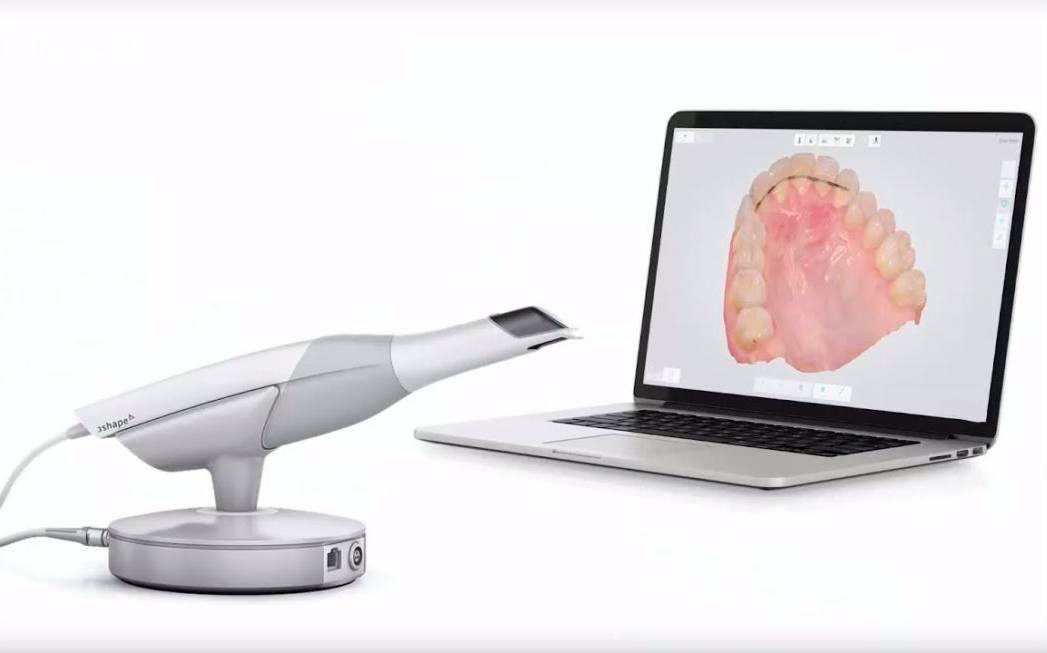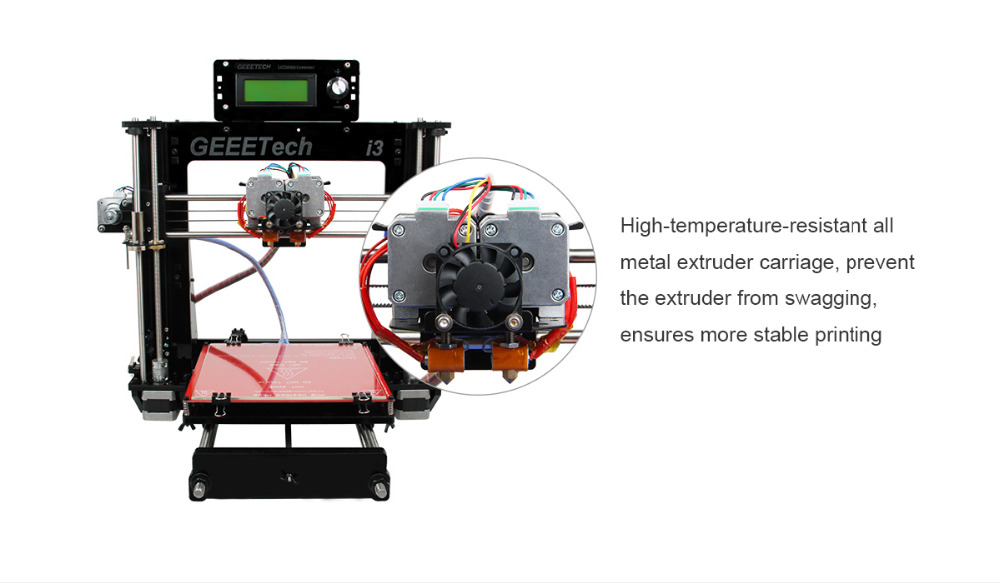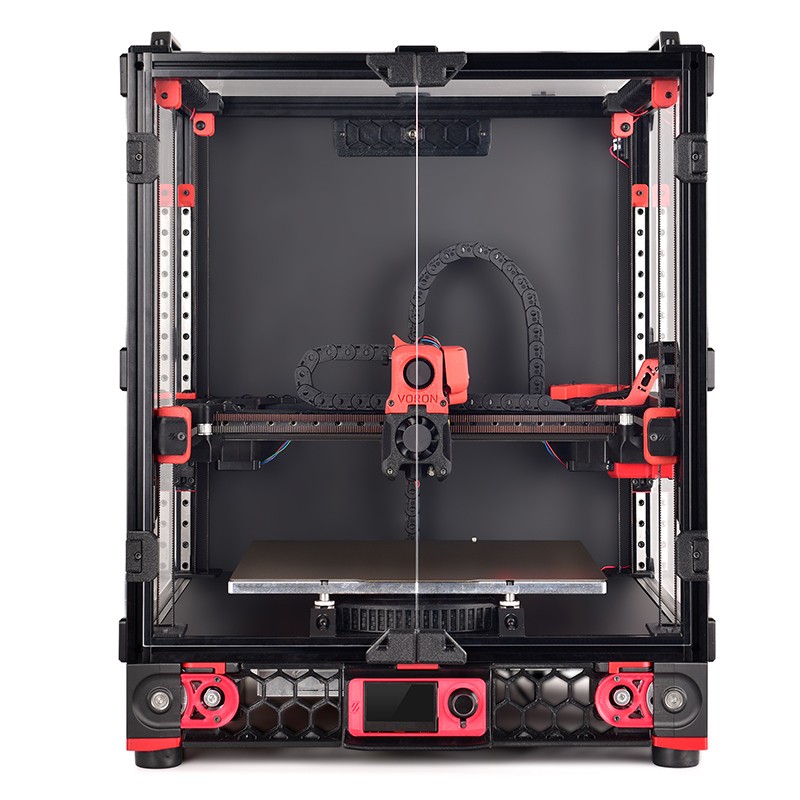Intraoral 3d scanner
The Top Intraoral Dental 3D Scanners on the Market
Published on July 1, 2021 by Madeleine P.
It is no secret that 3D technologies, and especially 3D scanners are becoming increasingly important in the dental sector. Recently, we covered the top dental lab 3D scanners, larger scanners that are used, as the name suggests, by dental labs to make the appliances from a premade impression. Though these are still probably the most popular scanners for 3D printing in the dental industry due to their greater accuracy, there is another type of dental scanner that we would be remiss to not cover: intraoral scanners. Intraoral dental 3D scanners are small handheld scanners that go directly into the patient’s mouth to examine the inside as well as to scan the teeth directly. They are significantly faster than impressions as the scans can be processed immediately, meaning they can be used to skip the impression stage. To help understand the options available to users, we have compiled a list of the available intraoral 3D scanners on the market in alphabetical order.
AORALSCAN from Shining 3D
The AORALSCAN is the intraoral dental 3D scanner offering from well-known 3D digitizing and AM technologies company Shining 3D. According to the manufacturing, the AORALSCAN is notable for its easy operation as well as its intelligent scan (a self-developed scanning software that integrates rich data processing functions for higher-quality digital impression) and realistic color. Additionally, it is powderless, meaning that there is a simplified process and improved patience experience. Data optimization is the main draw for this intraoral scanner, with AI helping to identify and delete extraneous data. Scanning is video-based with a speed of 15fps. Ideal operation will occur between 50°F – 104°F (10°C – 40°C) with Shining 3D warning that accuracy will be affected outside of those ranges. The scans can be exported as both STL and OBJ files.
CERECT PRIMESCAN from Dentsply Sirona
Dentsply Sirona is the industry-leading manufacturer of dental products. The company’s product range also includes the CEREC Primescan, which is one of the most innovative intraoral scanners on the market. The device is capable of processing more than 1 million 3D points per second – at depths of up to 20 mm. Dentists are said to be able to easily digitize hard-to-reach areas with the CEREC Primescan. The Primescan comes with a variety of sleeves, including autoclavable and disposable sleeves, which are said to ensure hygienic handling. An integrated touchscreen and touchpad guarantee easy operation. Thanks to the intelligent software, up to 50,000 images per second can be processed and, in combination with the CEREC software, an automated workflow is achieved, which makes it possible, for example, to produce full-zirconium restorations in just one session. According to the manufacturer, dentists will thus benefit from a complete chairside workflow.
The company’s product range also includes the CEREC Primescan, which is one of the most innovative intraoral scanners on the market. The device is capable of processing more than 1 million 3D points per second – at depths of up to 20 mm. Dentists are said to be able to easily digitize hard-to-reach areas with the CEREC Primescan. The Primescan comes with a variety of sleeves, including autoclavable and disposable sleeves, which are said to ensure hygienic handling. An integrated touchscreen and touchpad guarantee easy operation. Thanks to the intelligent software, up to 50,000 images per second can be processed and, in combination with the CEREC software, an automated workflow is achieved, which makes it possible, for example, to produce full-zirconium restorations in just one session. According to the manufacturer, dentists will thus benefit from a complete chairside workflow.
CS 3600 by Carestream Dental
American manufacturer Carestream Dental has developed a whole workflow around 3D scanning in the dental field, whether via desktop, intra-oral scanners or dedicated software. The model we are interested in is the CS 3600 intra-oral 3D scanner: on the market since 2016, it is a solution that can digitize all the data of a patient quickly and efficiently. Only weighing 325 grams (about 11.5oz), the scanner is very easy to handle. The CS 3600 uses an LED light and has a field of view of 13 x 13 mm. Two tips are offered with the scanner; depending on your needs, you can change them very easily. Finally, the intraoral scanner works with the CS Model software that will allow you to create digital models, save your 3D scans and edit them.
The model we are interested in is the CS 3600 intra-oral 3D scanner: on the market since 2016, it is a solution that can digitize all the data of a patient quickly and efficiently. Only weighing 325 grams (about 11.5oz), the scanner is very easy to handle. The CS 3600 uses an LED light and has a field of view of 13 x 13 mm. Two tips are offered with the scanner; depending on your needs, you can change them very easily. Finally, the intraoral scanner works with the CS Model software that will allow you to create digital models, save your 3D scans and edit them.
Condor Intraoral Scanner
Founded in 2010, Belgian company Condor Technologies NV specializes in the development, production and distribution of its intraoral scanner called Condor. According to the manufacturer, the Condor stands out from other intraoral scanners on the market: it has a unique software-based technology that enables hyper-realistic colors and a small size. In fact, it is said to be the world’s smallest intraoral scanner, which is also available at an affordable price. Last but not least, the continuously improved software is available free of charge.
In fact, it is said to be the world’s smallest intraoral scanner, which is also available at an affordable price. Last but not least, the continuously improved software is available free of charge.
Emerald S from Planmeca
Founded in 1969, Planmeca is a Finnish dental equipment manufacturer that offers 3D scanners, CAD solutions and software. The model we are interested in today is the Planmeca Emerald S, an enhanced version of the Planmeca Emerald intraoral scanner. Compact and weighing only 229 g, the Planmeca Emerald S has been designed to be ergonomic and thus fit in users’ hands. Equipped with red, green and blue lasers, the 3D scanner captures prints in realistic colors. According to the manufacturer, it can scan a full arch in less than a minute. Finally, the Planmeca Emerald S comes with additional tips: the SlimLine tip, which is thinner and designed to facilitate access to posterior teeth, while the Cariosity transillumination tip is designed to detect caries.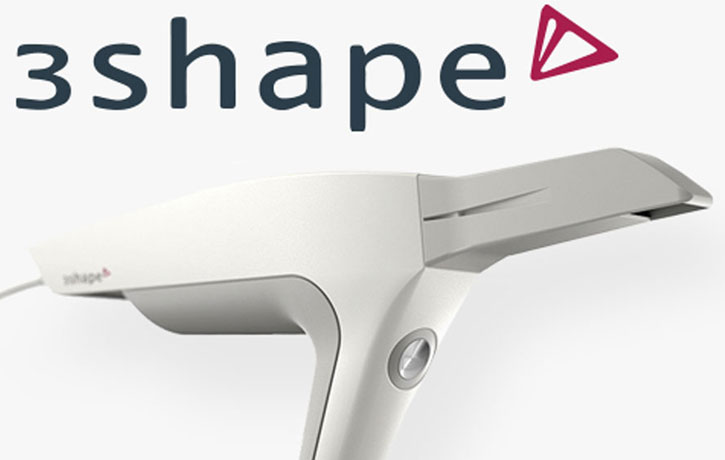
iTero Element 2 from Align
The next intraoral dental 3D scanner on our list is the iTero® element™ from the global dental company Align. The iTero® element™is two formats are available: a mobile version, the iTero® element™ 2, and a stationary unit, the iTero® element™ Flex 2. Within just 60 seconds, Align’s devices can produce a sharp, high-resolution 3D scan of a complete dental arch. Integrated side buttons and a touchpad for user interface control enhance handling and ease of use.
Medit i700 from Medit
The Medit i700 is one of the most recent intraoral dental 3D scanners to enter the market, in fact, it was just launched in April of this year, 2021.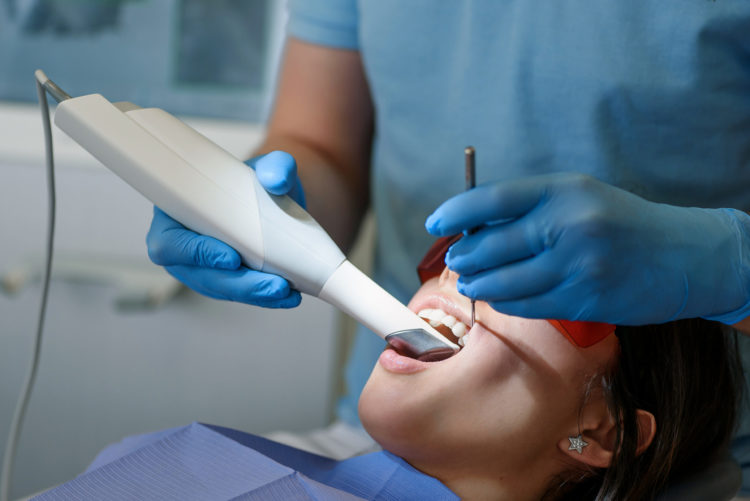 It stands out for making the scanning experience more comfortable for both the dentist and the patient. Compared to its predecessor, the Medit i500, the i700 is 25% smaller and 12% lighter (245g). In addition, the 3D scanning speed is up to twice as fast and features a deeper scanning depth as well as a quadrupled color expression quality. It also integrates full-arc accuracy of 11 microns, which is key to unlocking the full potential of a clinic. Its ease of use and ergonomics make it easy to incorporate the Medit i700 scanner into any dental workflow.
It stands out for making the scanning experience more comfortable for both the dentist and the patient. Compared to its predecessor, the Medit i500, the i700 is 25% smaller and 12% lighter (245g). In addition, the 3D scanning speed is up to twice as fast and features a deeper scanning depth as well as a quadrupled color expression quality. It also integrates full-arc accuracy of 11 microns, which is key to unlocking the full potential of a clinic. Its ease of use and ergonomics make it easy to incorporate the Medit i700 scanner into any dental workflow.
TRIOS 4 by 3Shape
3Shape is another well-known scanner manufacturer in the dental industry. Though they have lab options, their intraoral scanner line is often mentioned as one of the best in the sector. The TRIOS series is made up of 3 intraoral scanners: TRIOS 4; TRIOS 3; and TRIOS 3 Basic.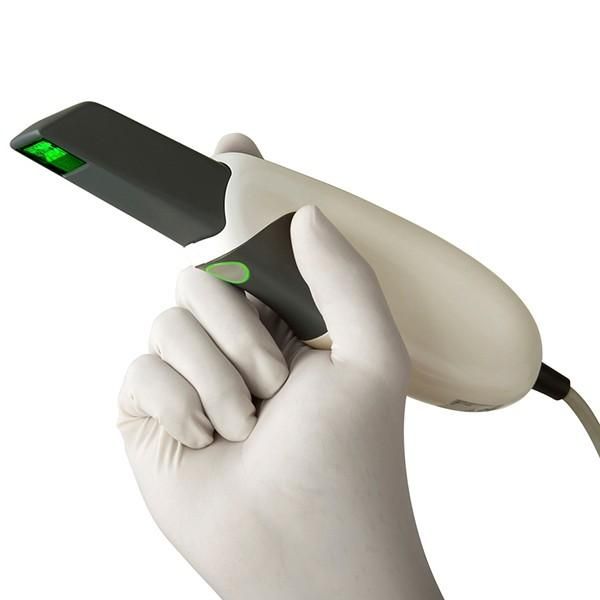 TRIOS 4 is the most advanced offering from the company, using LED light and weighing only .8lbs (375g). Furthermore, it has a variety of interesting features, it is available in both wireless and wired forms, boasts improved Wi-Fi connection and has instant-heat smart tips and extended battery life. It also has Caries diagnostic aid, though note that this has not yet been cleared for clinical use by the FDA.
TRIOS 4 is the most advanced offering from the company, using LED light and weighing only .8lbs (375g). Furthermore, it has a variety of interesting features, it is available in both wireless and wired forms, boasts improved Wi-Fi connection and has instant-heat smart tips and extended battery life. It also has Caries diagnostic aid, though note that this has not yet been cleared for clinical use by the FDA.
Virtuo Vivo from Dental Wings
Dental Wings was founded in 2007 in Canada and now markets its dental products in 70 countries for practitioners, clinicians and laboratories. Among its range of solutions is the Virtuo Vivo intraoral scanner, which is reminiscent of a pen – it is also lightweight at 4.6oz (130g). It is able to scan the data of the patient’s mouth from all angles, both teeth and tissues. The scanner is equipped with a luminescent ring and a sound signal system to warn the practitioner that the data has been digitized. The data is then sent to the 3D software, which verifies its quality.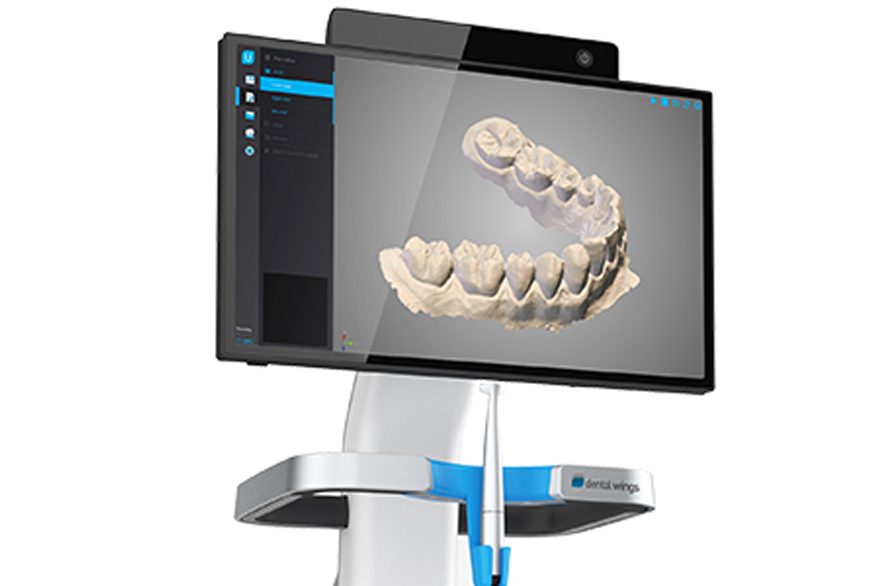
What do you think of our list of intraoral dental 3D scanners? Are we missing any? Let us know in a comment below or on our Facebook, Twitter and LinkedIn pages! Sign up for our free weekly Newsletter here, the latest 3D printing news straight to your inbox!
Dental Scanner, Intraoral 3D Scanner, Professional Dental 3D Solution
Get a quote
Thank you for your interest in SHINING 3D! Please fill out the form below. We will contact you shortly.
AfghanistanALAND ISLANDSAlbaniaAlgeriaAmerican SamoaAndorraAngolaAnguillaAntigua And BarbudaArgentinaArmeniaArubaAustraliaAustriaAzerbaijanBahamasBahrainBangladeshBarbadosBelarusBelgiumBelizeBeninBermudaBhutanBolivia, Plurinational State OfBosnia And HerzegovinaBotswanaBouvet IslandBrazilBritish Indian Ocean TerritoryBrunei DarussalamBulgariaBurkina FasoBurundiCambodiaCameroonCanadaCape VerdeCayman IslandsCentral African RepublicChadChileChinaChristmas IslandCocos (Keeling) IslandsColombiaComorosCongoCook IslandsCosta RicaC?te D'IvoireCroatiaCubaCyprusCzech RepublicDenmarkDjiboutiDominicaDominican RepublicEcuadorEgyptEl SalvadorEquatorial GuineaEritreaEstoniaEthiopiaFalkland Islands (Malvinas)Faroe IslandsFijiFinlandFranceFrench GuianaFrench PolynesiaFrench Southern TerritoriesGabonGambiaGeorgiaGermanyGhanaGibraltarGreeceGreenlandGrenadaGuadeloupeGuamGuatemalaGuernseyGuineaGuinea-BissauGuyanaHaitiHeard Island And Mcdonald IslandsHoly See (Vatican City State)HondurasHong KongHungaryIcelandIndiaIndonesiaIran, Islamic Republic OfIraqIrelandIsle Of ManIsraelItalyJamaicaJapanJordanKazakhstanKenyaKiribatiKorea, Republic OfKosovoKuwaitKyrgyzstanLao People'S Democratic RepublicLatviaLebanonLesothoLiberiaLibyan Arab JamahiriyaLiechtensteinLithuaniaLuxembourgMacaoMadagascarMalawiMalaysiaMaldivesMaliMaltaMarshall IslandsMartiniqueMauritaniaMauritiusMayotteMexicoMicronesia, Federated States OfMoldova, Republic OfMonacoMongoliaMontenegroMontserratMoroccoMozambiqueMyanmarNamibiaNauruNepalNetherlandsNetherlands AntillesNew CaledoniaNew ZealandNicaraguaNigerNigeriaNiueNorfolk IslandNorthern Mariana IslandsNorwayNORTH KOREAOmanPakistanPalauPalestinian Territory, OccupiedPanamaPapua New GuineaParaguayPeruPhilippinesPitcairnPolandPortugalPuerto RicoQatarReunionRomaniaRussian FederationRwandaSaint BarthélemySaint HelenaSaint Kitts And NevisSaint LuciaSaint MartinSaint Pierre And MiquelonSaint Vincent And The GrenadinesSamoaSan MarinoSao Tome And PrincipeSaudi ArabiaSenegalSerbiaSeychellesSierra LeoneSingaporeSlovakiaSloveniaSolomon IslandsSomaliaSouth AfricaSpainSri LankaSudanSurinameSvalbard And Jan MayenSwazilandSwedenSwitzerlandSyrian Arab RepublicTaiwan, Province Of ChinaTajikistanTanzania, United Republic OftestThailandTimor-LesteTogoTokelauTongaTrinidad And TobagoTunisiaTurkeyTurkmenistanTurks And Caicos IslandsTuvaluUgandaUkraineUnited Arab EmiratesUnited KingdomUnited StatesUruguayUzbekistanVanuatuVenezuela, Bolivarian Republic OfViet NamVirgin Islands, BritishVirgin Islands, U. S.Wallis And FutunaWestern SaharaYemenZambiaZimbabweMACEDONIASOUTH GEORGIADemocratic Republic of the Congo
S.Wallis And FutunaWestern SaharaYemenZambiaZimbabweMACEDONIASOUTH GEORGIADemocratic Republic of the Congo
* Which product are you interested in?Industrial Grade Handheld 3D Laser ScannerHigh-Precision 3D Inspection ScannerPortable Wireless Optical CMM SystemPhotogrammetryMultifunctional Handheld 3D ScannerDesktop 3D ScannerIntraoral 3D ScannerLab 3D ScannerDental CAD SolutionDental 3D PrinterDesktop 3D PrinterPortable Shoe ScannerStable Shoe ScannerOther
submit...
Intraoral (intraoral) scanner in dentistry - 3D scanning of teeth
Digital dentistry is actively developing. Every year, new technologies appear that improve the quality of treatment, its comfort and the predictability of the clinical result. We at Light Dentistry regularly update equipment and introduce digital technologies into everyday practice. For example, we recently purchased a Medit i500 intraoral scanner (South Korea).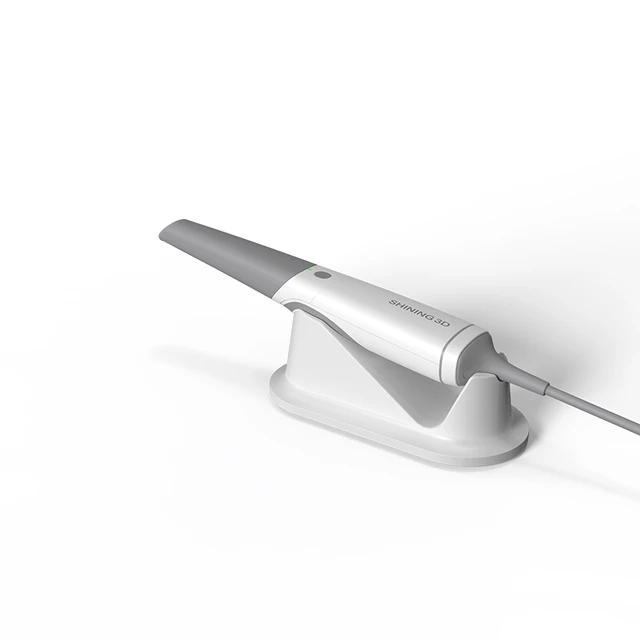 Let us tell you what it is all about.
Let us tell you what it is all about.
Why do I need an intraoral scanner?
This device is required for intraoral scanning to obtain real-time digital impression of a single tooth or an entire row, as well as photographs of soft tissues. It is used in:
- Orthopedics instead of classical individual jaw impressions. Allows you to make prosthetic structures with an accuracy of hundredths of a millimeter: bridges, crowns, veneers, inlays.
- Implantology for preoperative diagnosis of dental implants and the production of surgical templates (special matrix for precise and atraumatic implantation). nine0010
- Orthodontics for a detailed study of the clinical picture, making the most accurate diagnosis, making orthodontic constructions.
Doctor's opinion
We want to guarantee our patients an excellent treatment result, so we decided to buy an intraoral scanner. After comparing several top models (their characteristics, ease of use, price-quality ratio), we decided to choose the Medit i500 model and have never regretted it! nine0003
Karpov Anton Sergeevich
Implant surgeon, orthopedist
Read about the doctor
About the doctor
What's in it for me?
1.
 Comfortable
Comfortable Usually, an impression for the manufacture of an orthopedic structure is done as follows - the impression tray is filled with silicone, after which the patient must bite it and hold it for 6-7 minutes until the impression mass hardens. This is not the most pleasant procedure, especially for patients with an increased gag reflex. During the extraction of the silicone impression, the patient also experiences discomfort. nine0003
Our clients deserve better, they no longer have to endure discomfort during impression taking. The intraoral scanner allows you to quickly (scan the entire arch takes up to 2 minutes) and comfortably (no discomfort) to take a digital impression.
2. High precision
Quite often voids and bubbles appear in the most important places on impressions. As a result, the impression model is inaccurate and the dental technician returns it for re-shooting. This delays the healing process. The patient is wasting time as he has to come back to the clinic. nine0003
nine0003
Intraoral 3D scanning allows you to get a digital impression without errors. If the doctor sees digital pores, glare or areas with incomplete scanning in the image, then he additionally performs a local rescan.
3. Fast
In the past, patients had to wait up to 2 weeks for a dental technician to fabricate a prosthesis. Thanks to intraoral 3D scanning, the whole process will take several days.
STL file is immediately sent to the dental laboratory without the involvement of a courier service. The risks of damage or loss of the impression during transportation are leveled. nine0003
If the technician is not satisfied with the quality of the received digital impression, the doctor can scan the "problem" areas in a matter of minutes and send a new file. With a traditional cast, this would take several days.
Conclusion: Our patients no longer need to take diagnostic impressions. No more discomfort, no more problems due to an inaccurate impression and tedious waiting for a plaster model to be made in the dental laboratory!11 Mar 2021
2451
Intraoral 3D scanner replaces dental impressions
We asked Vladimir Lutsenko , the founder and head of Star Smile, the leader of the Russian aligner market, providing digital 3D dental modeling services in more than 25 countries around the world, to talk about 3D scanning of teeth and intraoral/intraoral scanners.
If we talk about intraoral intraoral scanning of teeth, then the first intraoral scanners appeared in the early 2000s. The first companies to sell intraoral scanners on an industrial scale are Sirona (Germany) and OrthoCAD from Israel, which sold iTero intraoral scanners in America. nine0003
What is an intraoral scanner used for?
Using an intraoral scanner, you can immediately scan the patient's teeth directly and immediately receive a digital 3D model of the teeth online. That is, teeth are scanned instead of taking classic casts.
What are the advantages of intraoral scanners? First: convenience and comfort for the patient. There are a number of patients who cannot tolerate conventional impression masses. They have a gag reflex - for example, it is very common in children. nine0003
And for such patients, intraoral scanning is probably the only possible way to take a digital impression of their teeth.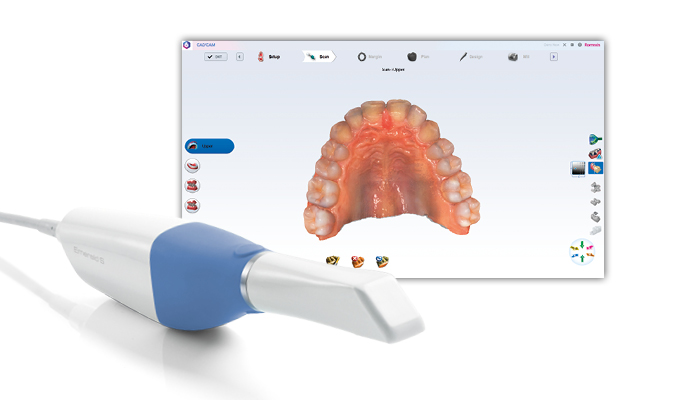 Second, intraoral scanning achieves significantly higher accuracy than traditional casts.
Second, intraoral scanning achieves significantly higher accuracy than traditional casts.
For example. When we make a high-precision A-silicone impression of the teeth, then cast a plaster model for 3d scanning in a laboratory scanner, an error of about 100 microns is obtained at the stage of taking the impression and casting the plaster model. Modern intraoral scanners provide 5-7 times higher accuracy - up to 12 microns. nine0003
Accordingly, the digital model obtained using intraoral scanning is significantly more accurate. This is very important for orthopedics, in the production of crowns, it is also important in the production of aligners. Why? Because the aligner works due to the very good fit of the teeth. And if the impression is not accurate enough, it means that in some places the aligner will not fit the teeth enough, will not press as expected, and, accordingly, part of the tooth movement may not happen because of this. nine0003
This rule is confirmed by the statistics of our company. We see that clients who use intraoral scanners in their practice, in their clinics, have a significantly lower revision percentage than those clients who work with traditional impressions, even if they use high-precision A-silicone.
We see that clients who use intraoral scanners in their practice, in their clinics, have a significantly lower revision percentage than those clients who work with traditional impressions, even if they use high-precision A-silicone.
Manufacturers of intraoral scanners
To date, 7-8 companies are widely represented in the world that are engaged in the production of intraoral scanners. First, the ones I mentioned. This is CEREC of the German company Sirona, this is the iTero scanner, which is currently manufactured and owned by Align Technology. This is the company that also makes Invisalign aligners. This is the American company Carestream. This is the European company 3Shape with the TRIOS scanner. nine0003
A very worthy scanner has recently appeared on the market - in terms of scanning quality and convenience, and most importantly, with the most reasonable price. The scanner is called i500. From the Korean company Medit.
Star Smile is a partner of major scanner manufacturers
With all the above manufacturers, we - the Star Smile company - have established contact, cooperation, which allows our clients, when using these scanners, not to send stl-files to our company, but you can simply enter an ID-scan number in your personal account, and we, using our an agreement, online communication with the servers of scanner manufacturers, we will independently get access to the intraoral scan, to stl-files and we will be able to start the production of aligners. nine0003
One of our last contracts that we were able to conclude is with Sirona, thanks to which we now have access to CEREC scanners. Any client who owns a CEREC scanner (first of all we are talking about the latest Omnicam models, because the previous models are not very suitable for orthodontics, they are mainly intended for orthopedics) can take an intraoral scan of a patient and immediately send this intraoral scan to us at laboratory for the production of aligners.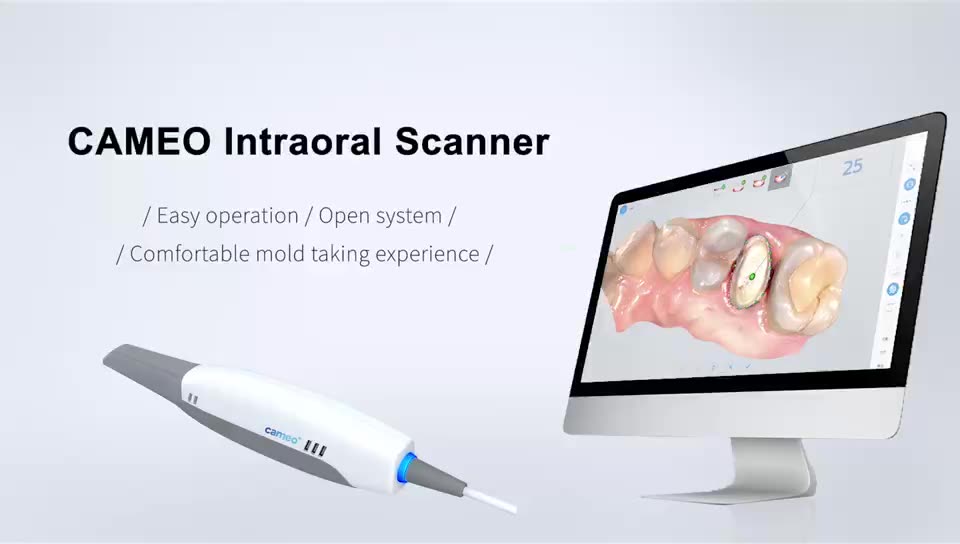 nine0003
nine0003
This is a very important contract for us, because both in Europe and in America, CEREC has a leading position in the intraoral scanning market. I think that up to 50% of our new customers who register on our site in Europe and North America own CEREC scanners.
What are the other benefits of intraoral scanning for Star Smile clients?
Another advantage is the speed of data exchange between the clinic and us as aligner manufacturers. nine0003
If the doctor takes traditional casts of teeth, then in order for us to be able to start production, these casts must either be scanned at the clinic ourselves or sent to our office for digital scanning in 3D.
Sending dental casts and the process of scanning them into a 3D model of teeth takes a lot of time. On average, it's probably two to three business days.
If the doctor works with an intraoral scanner and has scanned the patient's mouth, then we can start the production of a virtual SetUp as part of the production of aligners almost immediately after the doctor has finished scanning and registered the order in our system. nine0003
nine0003
We see that, on average, this reduces the production time of a virtual SetUp by 2.5 days, which is very good, considering that the average production time for a virtual SetUp is just over 4 days. This means that those customers who start working with intraoral scanning receive a virtual SetUp in two business days, even a little faster.
Another of the key advantages of intraoral scanning, intraoral scanners over traditional impressions, is the online control over the quality of the scan, which can be performed by the doctor. nine0003
Imagine such a situation that the doctor took casts of teeth, looked, and they seemed to him without errors, without flaws. I sent these casts to the laboratory to any manufacturer. And further, with 3D scanning, it turned out that after all, the cast was not of sufficient quality. Somewhere there are braces, for example, somewhere, perhaps, the gingival margin is not well “awakened”, somewhere there are air bubbles or saliva. All this affects the quality.
All this affects the quality.
When working with traditional casts, this is only visible when the plaster model is cast and the plaster model is already scanned. This is a very painful situation when it turns out that the impression is of insufficient quality and cannot be used in the production of aligners. This is unpleasant because you have to call the patient to re-take impressions of his teeth, and at the same time a lot of time is lost. We spend at least two or three days on taking new casts and sending them back to 3d scanning and production. nine0003
If the clinic works with an intraoral scanner,
then the doctor or his assistant who is engaged in scanning, during the scanning process, can visually, on the computer screen, control the quality of the resulting scan, the quality of the digital model. If he sees that a flaw has turned out somewhere, then this place can be immediately rescanned. This virtually eliminates errors in the scans, so you don't have to return the patient for a rescan.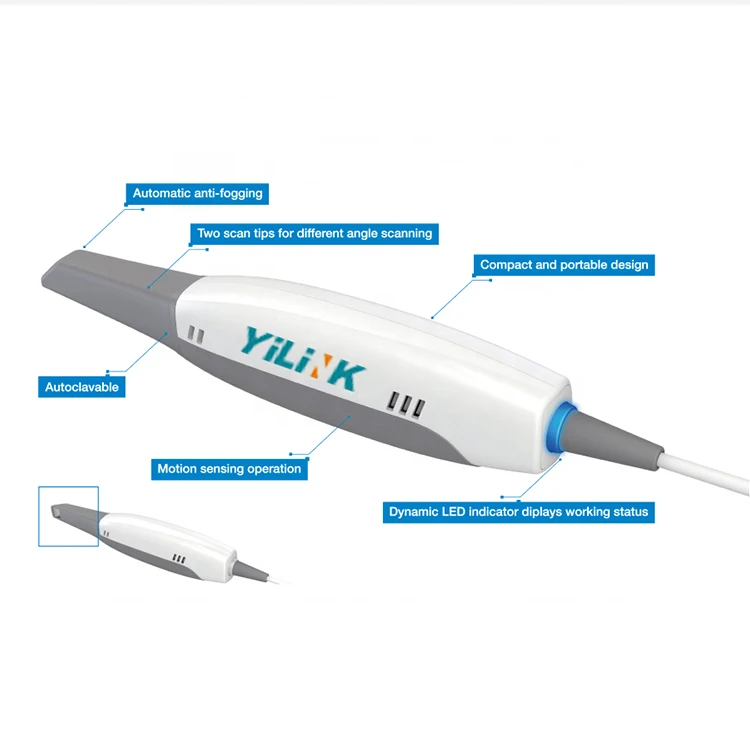
Undoubtedly, the intraoral scanner is the most promising and useful technique for 3D modeling of teeth in the present and near future. But also very expensive. We carefully avoided the cost of scanners in the article, because now you will be offered a service that will solve your scanning problems without buying a scanner. Why buy a scanner, because the cost of intraoral scanners starts from 15 thousand euros? Considering all the above advantages, our company Star Smile in January 2019launched a new service we call Field Scanning.
Onsite 3d-scanning from Star Smile
So far, the field scanning service is working in Moscow and St. Petersburg. Thanks to this service, all our clients - clinics or doctors - can call a Star Smile employee with an intraoral scanner, who, by agreement, will arrive at your clinic at the appointed time and scan the patient. nine0003
How much does an on-site 3D scanning cost
By the way, the on-site scanning service is free when ordering Star Smile aligners.